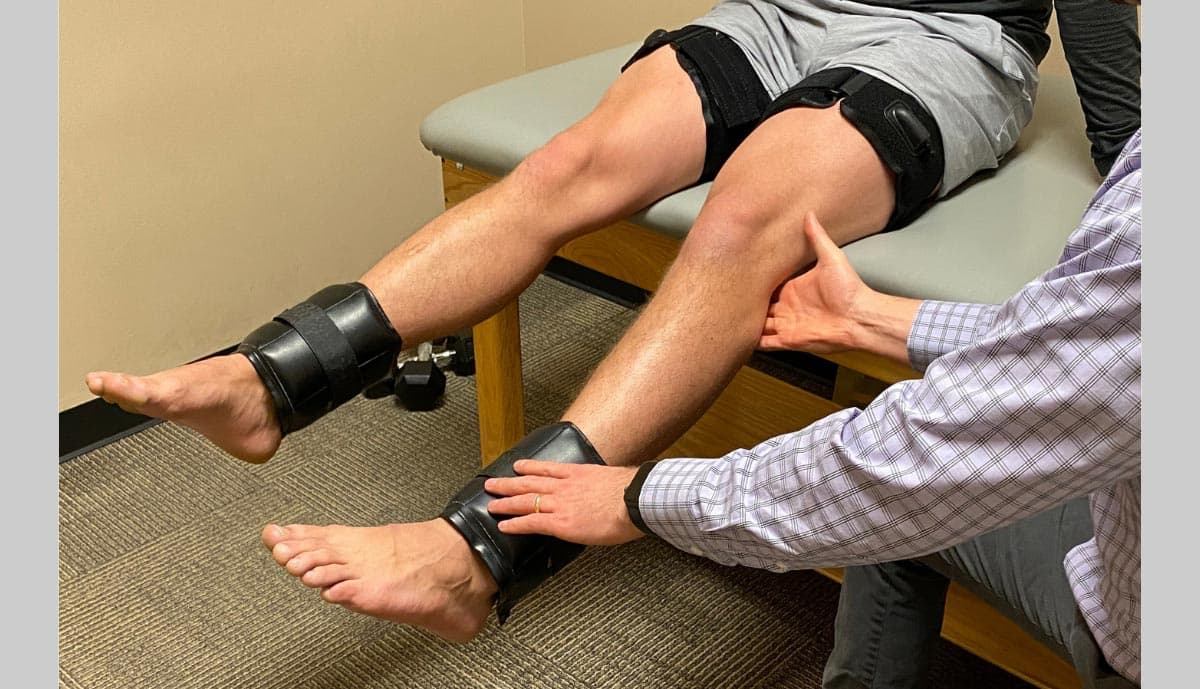
Blood flow restriction training uses a specially designed cuff or strap to improve strength and promote healing safely after injury or after surgery.
Blood flow restriction training (BFR) is a technique that can be used to increase strength
in an arm or leg through the use of a specially designed cuff or strap placed tightly around the limb during exercise to reduce, but not completely occlude, blood flow.
During blood flow restriction training, a patient or athlete performs high repetitions of a particular exercise while wearing the cuff or strap around their upper arm or upper leg with use of light resistance to improve strength.
After some injuries or surgery, strength training must be delayed to promote healing or due to immobilization. Blood flow restriction training is an option that can be used after injury to allow strengthening while working at light loads that are appropriate for healing.
The benefits of blood flow restriction training include:
*Services are not available at every location. Visit our Locations page for more details.